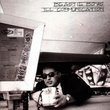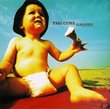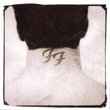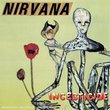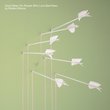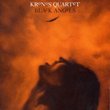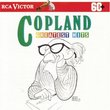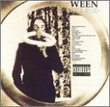| All Artists: Vandermark 5 Title: The Color Of Memory Members Wishing: 1 Total Copies: 0 Label: ATAVISTIC Original Release Date: 1/1/2005 Re-Release Date: 3/31/2009 Genres: Jazz, Special Interest, Pop Styles: Avant Garde & Free Jazz, Modern Postbebop, Bebop Number of Discs: 1 SwapaCD Credits: 1 UPCs: 735286116625, 0735286116625, 669910593356 |
Search - Vandermark 5 :: The Color Of Memory
CD DetailsSimilarly Requested CDs
|
CD ReviewsThe Vandermark 5's finest record to date. Troy Collins | Lancaster, PA United States | 09/26/2005 (5 out of 5 stars) ""The Color of Memory," the eighth official studio recording by the Vandermark 5, is coincidentally both the band's first double album of original material and the last to feature original trombonist Jeb Bishop (Chicago based cellist Fred Lonberg-Holm is slated to be Bishop's replacement in the future). It is also the ensembles most accessible and enjoyable recording to date. Full of up-tempo swing, intricate but memorable horn charts and plenty of lyrically intense soloing, it is perhaps Vandermark and company's finest statement with this line-up.
Vandermark has long demonstrated an affinity for writing catchy, cross-over tunes that appeal to a younger, hipper audience. Despite their multi-part, suite-like structure, Vandermark's writing always employs traditional elements that are recognizable even to casual jazz fans. The pieces featured on this double album were partially inspired by a tour with Norwegian avant jazz ensemble Atomic, with whom Vandermark collaborated on 2004's "Nuclear Assembly Hall." Falling on the jazzier side of the tenuous rock/jazz divide, Atomic's influence on Vandermark is apparent here. His decision to forsake rock oriented structures (prominently featured on earlier releases when Jeb Bishop doubled on electric guitar) to focus on a swing based feel results in an album that is infectious and consistent in its sound. Opening with "That Was Now," a hard charging riff driven by the sort of obtuse, lurching funk Vandermark and his cohorts excel at, the piece moves suite-like through numerous motifs, yet always keeps the listeners attention. Among the highlights: David Rempis' spiraling, acerbic unaccompanied alto sax cadenza, a spastic, stuttered bass and drum breakdown, Jeb Bishop's menacing, muted, gutbucket trombone excursion and Vandermark's own frenetically multiphonic baritone solo. Between each transition, the principle theme is resurrected to provide a sonic sign post for the listener. Vandermark always acknowledges his influences, most notably by dedicating his compositions to specific artists, and this album is no exception, but it is in his ensemble writing that his inspirations become most apparent. For example, "Suitcase" and "Chance" emulate a classic West Coast Swing vibe, with their catchy melodies and snappy delivery. "Suitcase" even opens with an angularly funky bass clarinet solo from the leader that would make Eric Dolphy proud. Similarly, "Chance" conjures the ghost of Charles Mingus with its sombre finale. With pieces dedicated to such diverse artists as Art Pepper, Nina Rota, Ray Charles and even The Volcano Suns, this all-encompassing appreciation of Vandermark's helps to expand the stylistic reach of this set of free-bop well past its central focus. Vandermark is never a slave to his influences however, as his explosively intervallic tenor solo on "Burn Nostalgia" demonstrates. Dedicated to Art Pepper, the tune burns at a fearsome energy level its dedicatee never would have imagined in his own music. Only "Road Work" and the opening half of "Camera" drift into austere modernity. Bowed cymbals, skittering percussion, arco bass harmonics, muted trombone and slinky clarinet lines trade pointillistic shards with one another throughout. But even "Camera" eventually explodes into blistering free-bop featuring another of Bishop's lyrically intense trombone solos. Except for these few, short chamber-esque excursions, the majority of tunes on "The Color of Memory" are primarily driven along by an ebullient sense of swing. Kent Kessler's walking bass patterns veer from smoky, noir groove to break neck runs with Tim Daisy in full pursuit. Whether bludgeoning his toms into submission or hammering away manically on his ride cymbal, Daisy delivers elastic rhythms with Kessler that both support and challenge their companions' solo flights. Vandermark's skill at combining intricate, interlocking structures with accessible arrangements is becoming more apparent with each release. With snappy horn hits and melodically concise riffs backing featured soloists at regular intervals, these pieces have a historically aware, semi-nostalgic vibe that the writing of his peers sometimes lacks. This dedication to the form is the secret to The Vandermark 5's popularity. While this might be the best place to start for those new to Vandermark's music, the only drawback is the double disc price, which is technically unnecessary, since all eight pieces total eighty minutes and could have easily fit on one CD with some minor editing. Nonetheless, "The Color of Memory" is The Vandermark 5's most enjoyable record to date, long time fans will be pleased and novices will find a wealth of riches awaiting them." |


